Collection of materials relating to neuro-ophthalmology as part of the Neuro-Ophthalmology Virtual Education Library.
NOVEL: https://novel.utah.edu/
TO
| Title | Creator | Description | Subject | ||
|---|---|---|---|---|---|
| 1 |
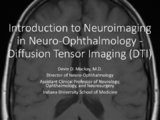 |
Diffusion Tensor Imaging (DTI) | Devin D. Mackay, MD | Explanation of using diffusion tensor imaging (DTI) in examinations. | Diffusion Tensor Imaging (DTI) |
| 2 |
 |
NExT Introduction | Sachin Kedar, MD, Editor-in-Chief | Transcript of video introduction to the NExT curriculum collection. | NANOS Examination Techniques |
| 3 |
 |
Introduction to Neurological Imaging | Devin Mackay, MD | Introduction to the techniques of neurological imaging examination. | Neurological Imaging |
| 4 |
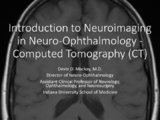 |
Computed Tomography (CT) | Devin D. Mackay, MD | Explantation of computed tomography (CT) examinations. | Computed Tomography (CT) |
| 5 |
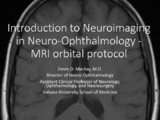 |
MRI Orbital Protocol | Devin D. Mackay, MD | Description of the MRI orbital protocol. | MRI Orbital Protocol |
| 6 |
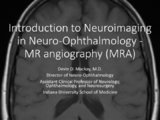 |
MR Angiography (MRA) | Devin D. Mackay, MD | Explanation of using MR angiography in examinations. | MR Angiography (MRA) |
| 7 |
 |
Doppler Ultrasonography | Devin D. Mackay, MD | Explanation of using doppler ultrasonography in examinations. | Doppler Ultrasonography |
| 8 |
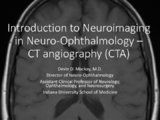 |
CT Angiography (CTA) | Devin D. Mackay, MD | Explanation of using computed tomography angiography (CTA) in examinations. | CT Angiography (CTA) |
| 9 |
 |
Paediatric Neuro-ophthalmology: Visual Acuity Assessment Strategies | Anat Bachar Zipori, MD; Nasrin Najm-Tehrani, FRCS Ed (Ophth), FRCSC | Assessing the visual function of a child can be challenging at times. When approaching a child one must understand visual development and accommodate to the child's capabilities, level of development and communication skills. The examining physician may need to apply more than one method to assess t... | Visual Acuity Assessment; Pediatric Visual Acuity Tests |
| 10 |
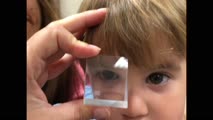 |
Pediatric Visual Acuity Strategies: Induced Tropia Test | Anat Bachar Zipori, MD; Nasrin Najm-Tehrani, FRCS Ed (Ophth), FRCSC | Induced Tropia Test. Using a 10-20 base-down prism, this exam demonstrates equal vision in both eyes. If there is evidence of ocular misalignment, prisms can be used to neutralize the movement and thereby measure the deviation, whether it is a heterotropia or heterophoria. Prisms are placed in front... | Induced Tropia; Prism Test |
| 11 |
 |
Vertical optokinetic nystagmus | Anat Bachar Zipori, MD; Nasrin Najm-Tehrani, FRCS Ed (Ophth), FRCSC | Visual depiction of the vertical OKN drum test. The vertical optokinetic drum test is an exam used to elicit vertical optokinetic nystagmus (OKN) when there is horizontal nystagmus. The hand-held "optokinetic" drums or tapes that are used to elicit smooth movements primarily test the pursuit system.... | Vertical Optokinetic Nystagmus; OKN Drum Test |
| 12 |
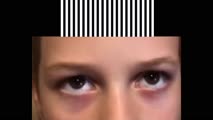 |
Horizontal Right Optokinetic Nystagmus | Anat Bachar Zipori, MD; Nasrin Najm-Tehrani, FRCS Ed (Ophth), FRCSC | Visual depiction of the horizontal OKN drum test. The hand-held "optokinetic" drums or tapes that are used to elicit smooth movements primarily test the pursuit system. This video supplements Paediatric Neuro-ophthalmology: Visual Acuity Assessment Strategies: https://collections.lib.utah.edu/ark:/... | Horizontal Right Optokinetic Nystagmus; OKN Drum Test |
| 13 |
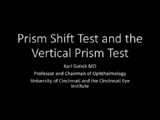 |
Prism Shift Test and the Vertical Prism Test | Karl C. Golnik, MD | Explanation of how to do the prism shift test and the vertical prism test. | Prism Shift Test; Vertical Prism Test |
| 14 |
 |
Introduction to Examination of the Pediatric Patient | Jason H. Peragallo, MD | Introduction to examination of the pediatric patient. | Pediatric Patient |
| 15 |
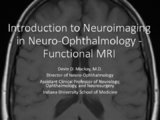 |
Functional MRI | Devin D. Mackay, MD | Explanation of using functional MRI in examinations. | Functional MRI |
| 16 |
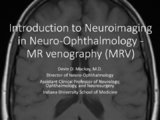 |
MR Venography (MRV) | Devin D. Mackay, MD | Explanation of using MR venography (MRV) in examinations. | MR Venography (MRV) |
| 17 |
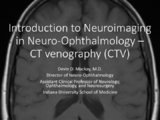 |
CT Venography (CTV) | Devin D. Mackay, MD | Explanation of using computed tomography venography (CTV). | CT Venography (CTV) |
| 18 |
 |
Positron Emission Tomography (PET) | Devin D. Mackay, MD | Explanation of using positron emission tomography (PET) in examinations. | Positron Emission Tomography (PET) |
| 19 |
 |
Digital Subtraction Angiography | Devin D. Mackay, MD | Explanation of using digital subtraction angiography in examinations. | Digital Subtraction Angiography |
| 20 |
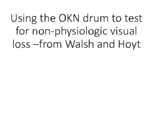 |
OKN Testing for Non-physiologic Visual Loss | Walsh and Hoyt Clinical Neuro-Ophthalmology, 6th Edition | Description of OKN testing for non-physiologic visual loss. | OKN Testing; Non-physiologic Visual Loss |
| 21 |
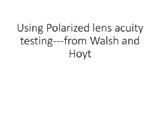 |
Using Polarized Lens Acuity Testing | Walsh and Hoyt Clinical Neuro-Ophthalmology, 6th Edition | Description of using a polarized lense for acuity testing. | Polarized Lens; Acuity Testing |
| 22 |
 |
Proprioception Testing for Non-physiologic Visual Loss | Walsh and Hoyt Clinical Neuro-Ophthalmology, 6th Edition | Description of proprioception for non-physiologic visual loss. | Proprioception Testing; Non-physiologic Visual Loss |
| 23 |
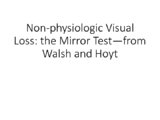 |
Mirror Test for Malingering | Walsh and Hoyt Clinical Neuro-Ophthalmology, 6th Edition | Description of the mirror test. | Mirror Test; Malingering |
| 24 |
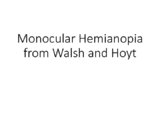 |
Monocular Hemianopia | Walsh and Hoyt Clinical Neuro-Ophthalmology, 6th Edition | Description of testing for a non-physiologic cause of a monocular hemianopia. | Monocular Hemianopia |
| 25 |
 |
Finger to Nose Perimetry | John Pula, MD | A description of the use of the finger to nose perimetry test is covered. | Non-organic Vision Loss |
